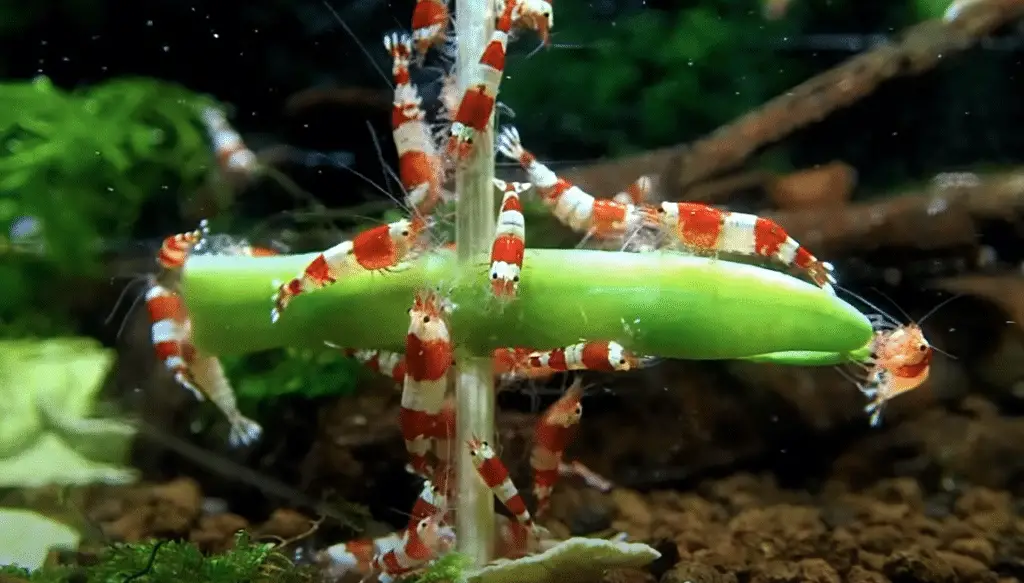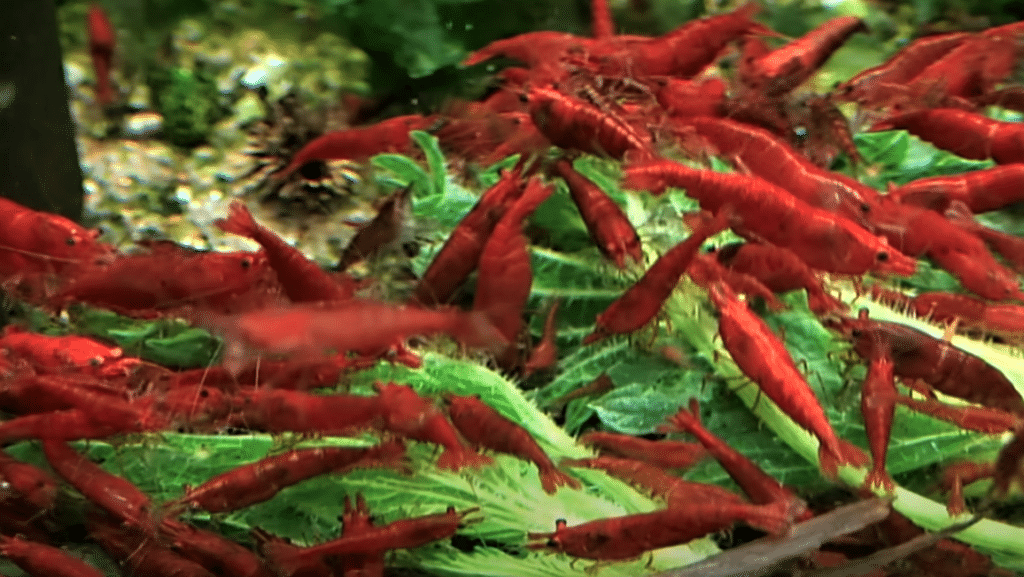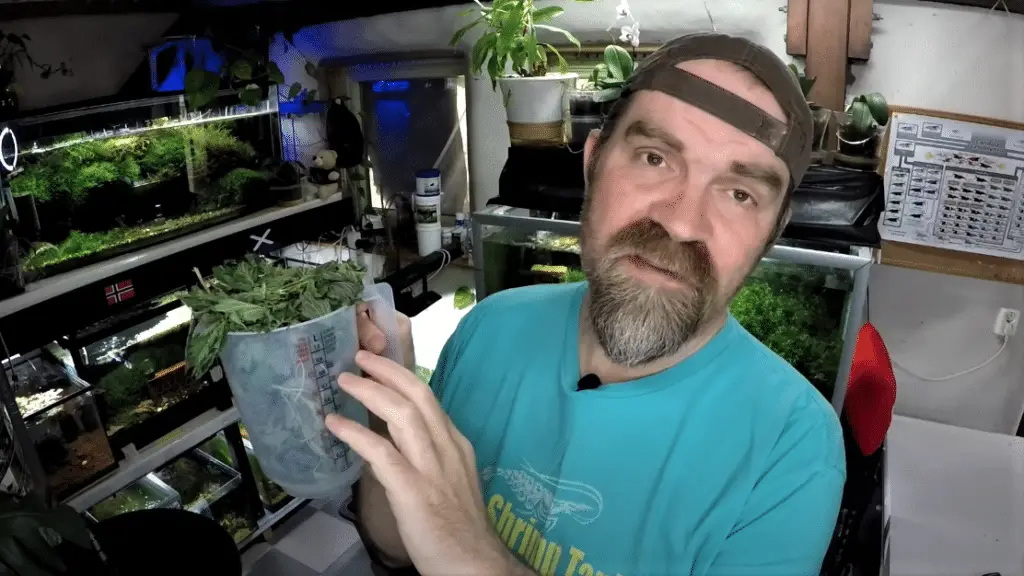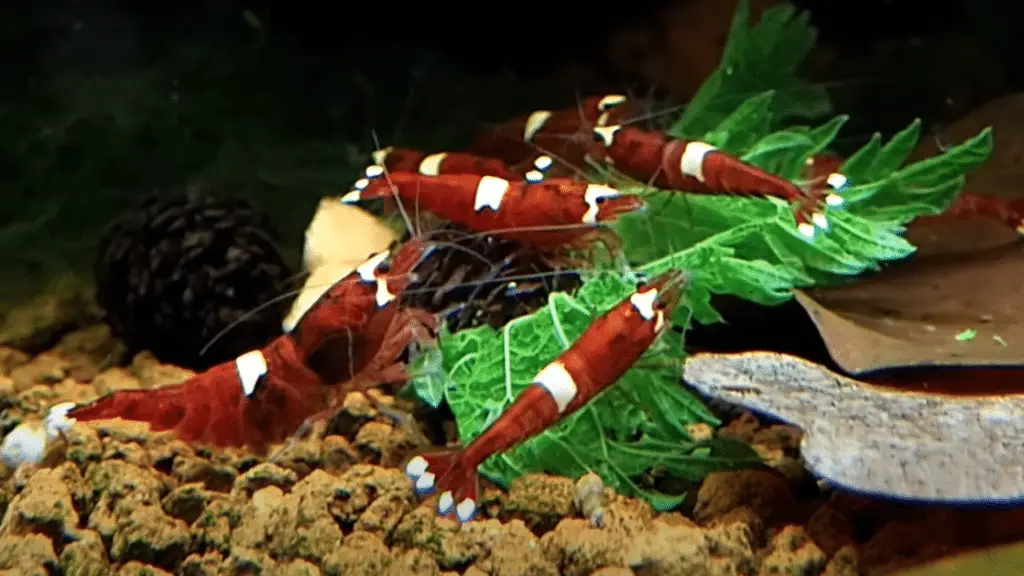Feeding your aquarium animals, such as fish, shrimp, and snails, the right kind of diet is essential for their health. Vegetables are an excellent addition to their menu, providing them with essential nutrients and vitamins.
This guide will teach you how to blanch vegetables for your aquatic pets and make mealtime a breeze!
Why Vegetables Are Good
Vegetables are packed with vitamins, minerals, and fiber that are vital for your aquarium animals’ overall health. They support proper digestion, boost the immune system, and help in maintaining vibrant colors in fish.
They’re especially important for shrimp and snails, which are natural scavengers and primarily eat plant material in their natural habitat.

Why We Blanch
Blanching is the process of briefly boiling vegetables and then cooling them rapidly in cold water. This technique has several benefits:
- Softens the vegetables, making them easier for your pets to eat and digest.
- Preserves the nutrients and vibrant colors of the vegetables.
- Kills any bacteria or parasites that may be present.
- Helps to remove pesticides.

List of Vegetables to Blanch That I have Tried With My Shrimp And Fish
Here is a list of the vegetables and leaves I have used:
- Nettle
- Spinach
- Zucchini/Courgette
- Kale
- Peas
- Broccoli
- Carrots
- Lettuce (e.g., Romaine, Green Leaf, or Red Leaf)
- Green beans
- Swiss chard
- Bok choy
- Collard greens
- Bell peppers (any color, seeds removed)
- Pumpkin
- Squash (e.g., Butternut, Acorn, or Spaghetti)
- Sweet potato
- Cauliflower
- Beet greens
- Dandelion greens
- Watercress
- Brussel sprouts
- Arugula/Rocket
- Mustard greens
- Turnip greens
- Asparagus
- Radish greens
- Endive
- Chicory
- Escarole
- Celery
- Fennel
- Artichoke
- Okra
- Edamame (soybeans, without the pod)
Remember to wash all vegetables thoroughly.

How to Blanch Vegetables For Fish, Shrimp And Snails
- Choose a suitable vegetable from the list above.
- Wash the vegetable thoroughly to remove any dirt or pesticides.
- Slice the vegetable into small, manageable pieces for your aquatic pets.
- Boil water in a pot, enough to submerge the vegetable slices.
- Place the vegetable pieces into the boiling water for 1-3 minutes. The exact time will depend on the type of vegetable and its thickness.
- Prepare a bowl of ice-cold water.
- Remove the vegetable pieces from the boiling water using a slotted spoon and immediately submerge them into the cold water for 1-2 minutes.
- Drain the vegetables and let them cool.

How To Blanch Vegetables In A Microwave
Blanching vegetables in a microwave is a quick and convenient method, especially when you don’t have access to a stovetop or you’re short on time. Follow these simple steps to blanch vegetables using a microwave:
- Choose a suitable vegetable from the list provided in the previous sections of the article.
- Wash the vegetable thoroughly to remove any dirt or pesticides.
- Slice the vegetable into small, manageable pieces for your aquarium animals.
- Place the vegetable pieces in a microwave-safe bowl or container.
- Cover the vegetables with water.
- Microwave the vegetables on high power for 1-3 minutes. The exact time will depend on the type of vegetable, its thickness, and your microwave’s wattage. You can refer to your microwave’s user manual for suggested cooking times or use the following guidelines:
- Leafy greens (e.g., spinach, kale): 1-2 minutes
- Thin vegetables (e.g., zucchini, green beans): 2-3 minutes
- Denser vegetables (e.g., carrots, broccoli): 3-4 minutes
- Keep a close eye on the vegetables during the cooking process to avoid overcooking.
- While the vegetables are in the microwave, prepare a bowl of ice-cold water.
- Once the vegetables are done, carefully remove the bowl or container from the microwave (use oven mitts or a towel to protect your hands).
- Drain the hot water and immediately transfer the vegetables to the bowl of ice-cold water for 1-2 minutes to stop the cooking process.
- Drain the vegetables and add them to your aquarium.

Ways to Hold the Blanched Vegetables Down:
Most of these vegetables will sink after blanching but if they don’t the best ways to sink the vegetables are as follows.
- Stainless steel fork: Place the blanched vegetable piece on the fork and place it on the substrate.
- Plant weights: Wrap a small plant weight around the vegetable to hold it down.
- Suction cup clips: Attach the blanched vegetable to a suction cup clip and place it on the side of your aquarium.
Here is a list of vegetables that are not recommended for blanching or feeding:
- Avocado fruit and leaves: The high-fat content in avocados is not suitable for aquarium animals, and some parts of the avocado, like the pit and skin, are toxic.
- Eggplant: Eggplant contains solanine, which can harm fish and invertebrates.
- Tomato leaves: Tomato leaves are toxic. I have never risked using them.
- Potato: Potatoes have high starch content, which can be difficult for aquarium animals to digest and may lead to water quality issues.
- Rhubarb: raw its very high in Oxalic acid, which can cause liver failure in humans. I wouldn’t feed this in any amounts to fish, shrimp and snails.
Remember that it’s essential to thoroughly research any vegetable you want to introduce into your aquarium, as some may contain compounds that could harm your aquatic pets. Always choose vegetables that are safe and suitable for their specific dietary needs.
Oxalic Acid in Vegetables and the Importance of Cooking
Oxalic acid is a naturally occurring compound found in many vegetables and plants. In small amounts, it’s generally not harmful to humans, but it can be toxic to aquarium animals like fish, shrimp, and snails. Cooking vegetables through methods like blanching helps to reduce their oxalic acid content, making them safer for your aquatic pets.
Why Oxalic Acid Matters:
Oxalic acid can interfere with absorbing essential nutrients like calcium and magnesium, leading to mineral deficiencies in your aquarium animals. Additionally, high levels of oxalic acid may cause irritation to the digestive system and can be toxic.
Vegetables High in Oxalic Acid:
Some vegetables contain higher levels of oxalic acid than others. Here are a few examples:
- Spinach
- Beet greens
- Swiss chard
- Rhubarb leaves (Note: Rhubarb leaves are toxic and should not be fed to aquarium animals)
- Purslane
- Sorrel
Cooking to Reduce Oxalic Acid: Blanching and other cooking methods can help to reduce the oxalic acid content in vegetables, making them safer for your aquatic pets. The heat breaks down some of the oxalic acid, while the boiling water can help to leach out a portion of the compound. It’s important to note that cooking doesn’t completely eliminate oxalic acid, but it does significantly reduce its levels.

Conclusion:
Feeding your aquarium animals blanched vegetables is an excellent way to provide them with essential nutrients for their growth and well-being. Blanching is a simple and effective technique that can be easily mastered with a little practice.
By offering your pets a variety of vegetables and using different methods to hold them down in the tank, you can make mealtime a fun and engaging experience for your aquatic friends.
FAQ
Q: How often should I feed blanched vegetables to my aquarium animals? A: It’s recommended to feed blanched vegetables to your aquatic pets 2-3 times per week. This frequency ensures that they receive the necessary nutrients without overfeeding them.
Q: Can I feed my fish raw vegetables instead of blanching them? A: Raw vegetables can be challenging for fish and other aquatic pets to eat and digest due to their hardness. Blanching the vegetables softens them, making them more accessible for your pets to consume.
Q: Can I blanch multiple types of vegetables at once? A: Yes, you can blanch multiple types of vegetables simultaneously. Just ensure that you adjust the blanching time for each vegetable, as some may require more time than others.
Q: Is it okay to add salt to the boiling water when blanching vegetables? A: It’s not necessary to add salt when blanching vegetables for aquarium animals. It’s best to avoid adding any seasonings or additives that may be harmful to your pets.
Q: Can I freeze blanched vegetables for later use? A: Yes, you can freeze blanched vegetables for later use. Make sure to store them in airtight containers or freezer bags to preserve their freshness. When you’re ready to use them, simply thaw the vegetables and add them to the aquarium.
Q: Do I need to remove the skin of the vegetables before blanching? A: It’s not necessary to remove the skin of all vegetables. For instance, cucumber and zucchini skin can be left on as they are easy for your pets to eat. However, it’s a good idea to peel vegetables like carrots to ensure they’re soft enough for your aquatic pets to consume.
Q: How long should I leave blanched vegetables in the aquarium? A: It’s best to remove any uneaten blanched vegetables from the aquarium within 24 hours to prevent water pollution and maintain a clean environment for your pets.
Q: Can I mix blanched vegetables with other types of food for my aquarium animals? A: Yes, you can mix blanched vegetables with other types of food, such as pellets or flakes , to provide a diverse diet for your aquatic pets. Just ensure that you don’t overfeed them, as this can lead to health problems and water quality issues.
, to provide a diverse diet for your aquatic pets. Just ensure that you don’t overfeed them, as this can lead to health problems and water quality issues.
